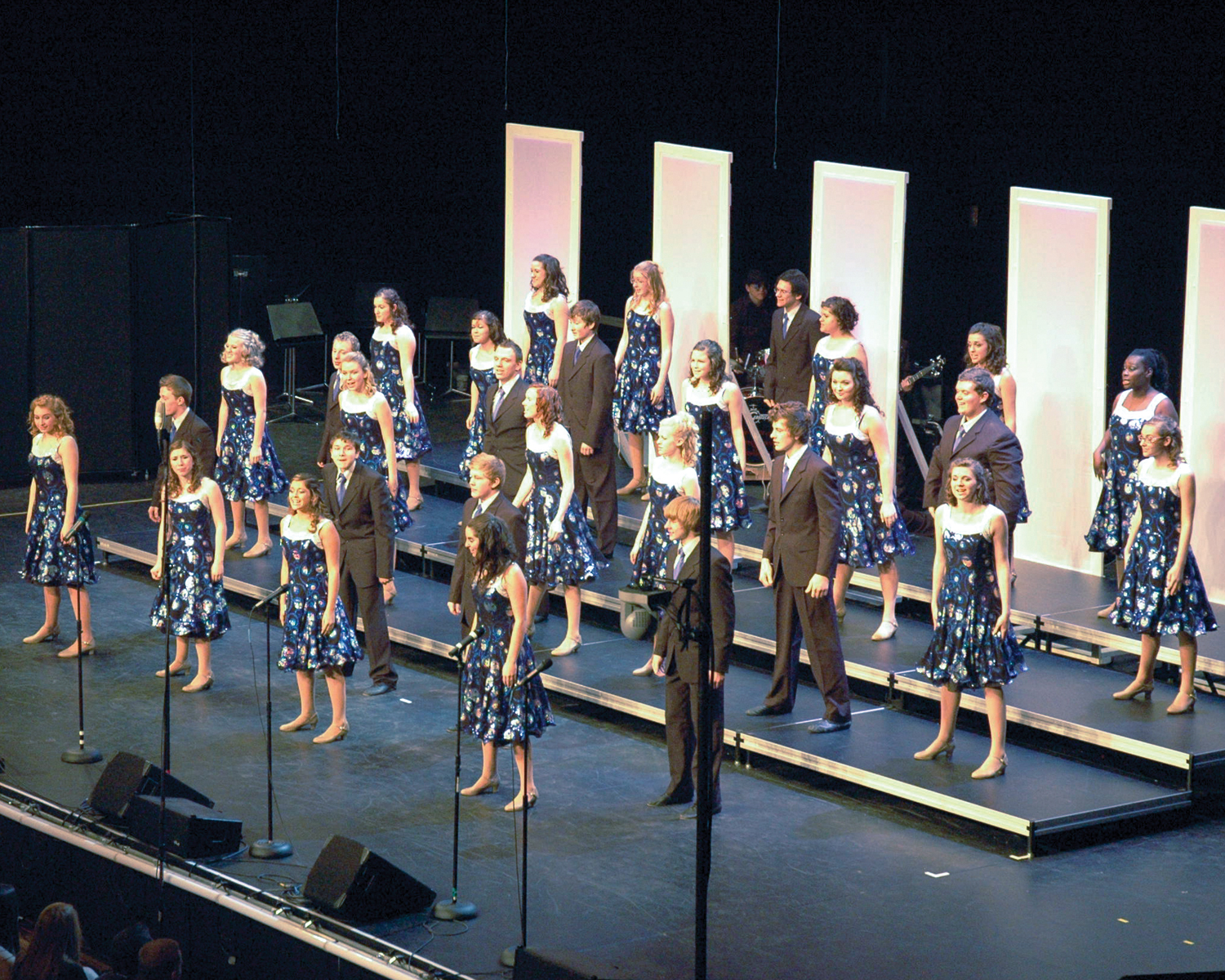
Not so fast, there is another critical component needed to execute a flawless performance, namely the stage equipment. Risers are the silent partner in show choir productions, and no one should be conscious of their presence as they can either enhance or distract from the performance. If the audience notices stage risers, etc., due to appearance or noise, it will detract from the performance, thus when selecting show choir risers, things to consider are: Stability, Durability, Safety, Style, Ease of storage and transporting, Set up speed, and Sound projection.
Stability/Durability
Unlike a conventional seated choir riser, show choir risers have much dynamic motion on them; therefore supporting framework should have additional leg bracing to reduce a wobbling, creaking effect during “show stopping” performances. Support systems that have a single support under each deck allows for fast and easy reconfiguration of risers during performance. For example, a single or couple of units can be moved apart from the main riser to highlight a soloist or duet couple. This type of system gives you more flexibility in your staging.
Ideally, dual sided decks with a sound reducing center core, e.g. fiber honeycomb material, greatly reduces “drum head” foot sound and potential bowing of conventional single sided decks while performers are executing foot stomping energetic dance steps. Dual sided decks also afford owners double wear life by utilizing one side for rehearsals, the other for performance.
Attain additional stability via decks and supports tied together by some means, as with Velcro straps securing legs of one support unit to an adjacent one, is a possibility. Manufacturers often supply clips that lock adjacent decks together, and when combined with added Velcro straps, stage stability increases exponentially. Considering riser utilization and desired longevity, one would strongly suggest the lowest bidder is not always the best acquisition. Quality costs more initially, but amortized over time becomes the best value. Who can forget the low-bid mirror in the Hubble space telescope?
Safety
The stability of the risers is particularly critical for show choirs due to considerable dynamic motion of the dancers. Solid structure assists in preventing potential injury or catastrophic failure of the equipment. Deck surfaces should be durable, slip resistant, but smooth enough to dance on. PolyTrac with a slightly textured surface provides superb performer traction. Smooth deck corners help prevent injuries or damage to costumes.
Style
Standard competition show choir configuration uses four, 4’x 8′ sections, three tiers high, with tier heights averaging 8″, 16″ or 24″, providing ease of use and excellent audience sight lines even when performers are in the back row. Larger show choirs often add a fourth 32″ level plus more sections across the stage. Mom and Dad don’t want to miss seeing a single dance step of their “budding” Broadway star.
To assist audience attention on dazzling performers, using black matte finish on supports and decks plus contrasting, non reflective surfaces applied to deck edges making different levels easily distinguished, and reflection from powerful spotlights virtually eliminated. Contrasted with conventional seated choir risers, hardclosure panels between levels are infrequently used, thus special effects, e.g. fog machines or special lighting, are easily placed under the risers. Additional props per vaudeville hats, umbrellas, or canes, can be easily accessed with this open format. Additional stairs on riser back or sides affords choreographers more creative ways of having choir members enter the platforms. Remember Busby Berkley and Bob Fosse!
Riser Storage and Transport
Shows traveling to different venues require safe and easy transport and storage, including riser break down into manageable weight and size components. Transport carts require non-marring wheels with ability to fit through standard 36″ doors when fully loaded, plus carts function best with two fixed casters and two swivel casters providing easier maneuverability. Look for carts with up to six decks and six support capacity, thus economizing storage space.
Sound Projection
Acoustic sound shells aid music projection toward the audience, particularly on stages having high fly space. When a pit band is behind the risers, acoustic shell reflectors help singers hear accompaniment music. Special effects lighting is often placed in front of these panels.
Setup Speed
With set up / tear down time limits, the ability to set up quickly, thus removing potential for time related penalties. Suggest no hand tool, quick-set risers for these conditions.
Conclusion
With respect to the above recommendations for show choir riser application, acquisition is accomplished with added knowledge to evaluate equipment available in the marketplace. Once acquired, one can enjoy show choirs’ rising stars to hear, “Places everyone, lights, music, Showtime!”
Break A Leg!











